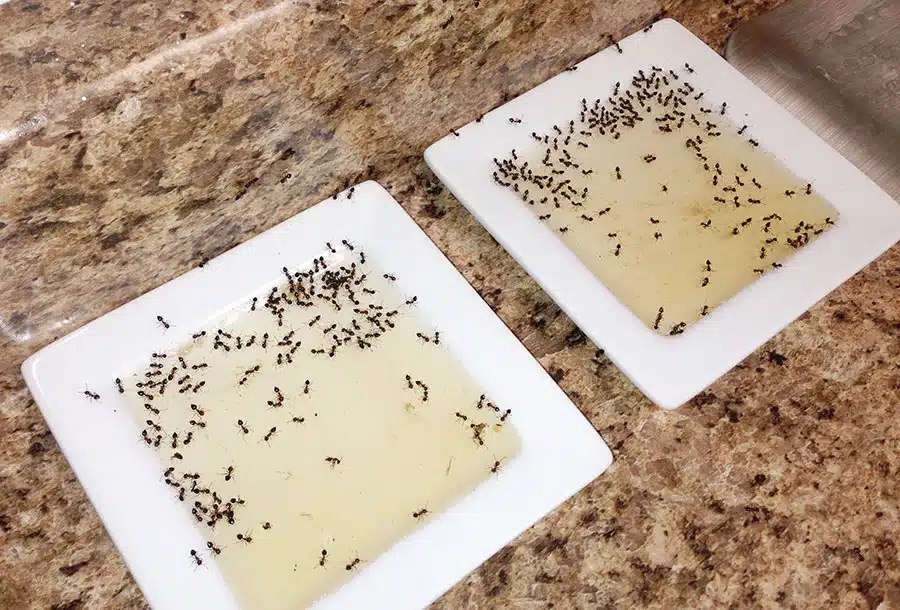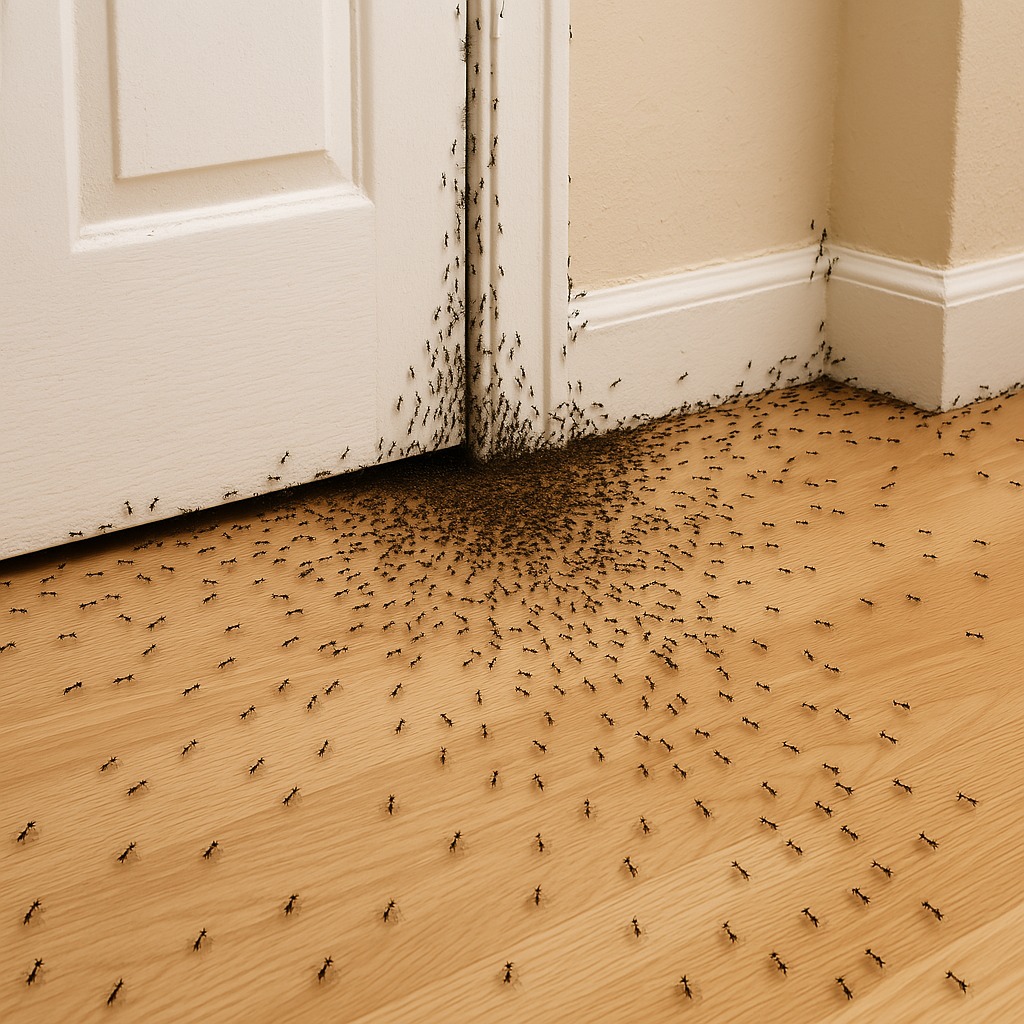Beyond the hygienic aspect, ants are sometimes a symptom of a deeper problem . Here’s what they may indicate:
- Excessive humidity : Some species, such as the carpenter ant, love damp wood. Their appearance can be a sign of water infiltration or excessively high humidity levels in certain rooms.
- Hidden Food Scraps : They find crumbs you can’t see, especially behind appliances or under furniture.
- An ecological imbalance : the absence of their natural predators (lizards, spiders, birds) can encourage their proliferation around your home.
What dangers do they really pose?
Although often perceived as harmless, certain species of ants can cause significant damage :
- Carpenter ants can tunnel into wood, weakening the structure of furniture and even roof frames.
- Others can carry bacteria and contaminate countertops or food.
- In the event of a massive invasion, they can even disrupt electrical installations , infiltrating sockets or appliances.

How to get rid of it naturally?
Fortunately, you don’t need to resort to chemical warfare to get rid of it. Here are some simple, natural tips:
- White vinegar : Clean surfaces with a mixture of water and vinegar to mask the remains left by ants.
- Lemon or coffee grounds : These strong odors alter your orientation.
- Baking soda and sugar : a formidable combination that attracts and then eliminates ants without harming the environment.
- Cinnamon or bay leaves : Place them at their entry points and they will act as a natural repellent.
And above all, maintain impeccable hygiene in the kitchen: a closed trash can, clean work surfaces, and properly stored food.
Should I be worried or consult a professional?
If, despite your efforts, the ants return in force, it may be helpful to call a specialist. An accurate diagnosis will help identify the source of the infestation, or even detect invisible problems such as water infiltration or wood infestations.
In summary…
The presence of ants in your home is much more than a simple nuisance. It’s a discreet warning sign about the state of your interior. So the next time you encounter one of these little workers, don’t ignore it. Observe, analyze… and act intelligently.

